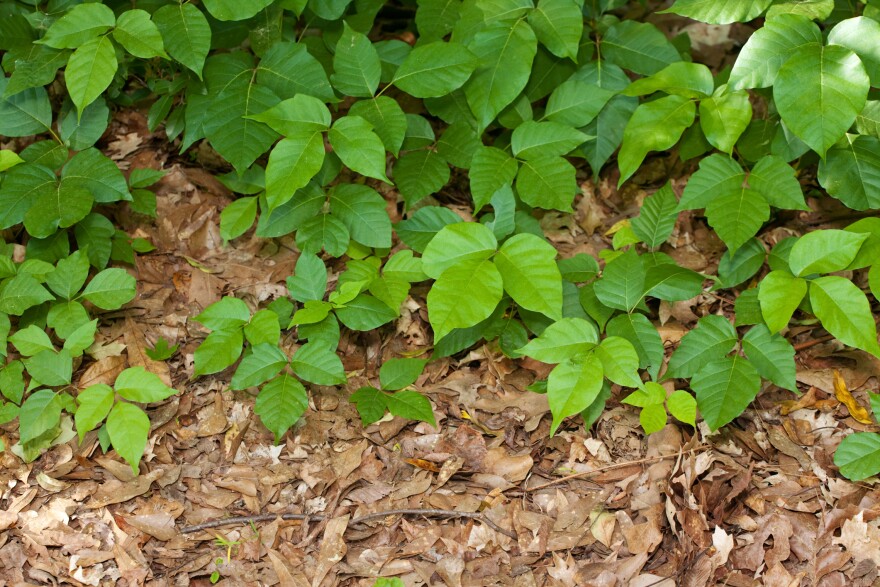When it comes to this native plant, 10 to 15% of the population is immune to poison ivy's itchy wrath.
For the rest of us, once we touch any part of the plant, we get that rash, which is caused by the oily mixture in it, called urushiol.
And urushiol is not just in or on the leaves, it's found in the stems, the roots and the seeds of the poison ivy plant. And the plant can be dormant and still cause issues.
That's why in the middle of the winter, if you're cleaning up the yard and cut some poison ivy roots or stems, you can still get a rash.
Be sure to identify the plant with a plant guide or by using a plant ID app on your phone.
Poison ivy is easy to confuse with other plants. And the old, "Leaves of three, let them be" adage does not always work.
The plants leaves can be small or large, have lobes or be serrated and sometimes have more than three leaflets.
Despite its bad rap, poison ivy is actually a good plant. It's a food source for deer and insects that eat the leaves and birds that eat the berries.
Poison ivy also vines and climbs up tree trunks, which in the fall, show off beautiful foliage.
In a forest setting, especially when the plants are at the edge of a forest, they act like a curtain and block the trees from heavy winds.
Still, poison ivy growing in yard where you or your pets frequent isn't idea. In that case, you might want to do something about it.
Try mowing it down repeatedly to weaken it. You could also try to cover the poison ivy with a tarp. Take care when pulling out roots; you'll want to wear gloves, long sleeves, long pants, even boots and a mask.
Really large poison ivy stems should be cut off about a foot or two from the ground. And if you use a very specific herbicide for poison ivy, you can paint it directly on the cut stem then cover the cut with an empty cup.
The herbicide will translocate down into the soil and kill the plant that way and not harm things around it.
Q: Phlox has taken over my garden. The previous owner planted a white variety but the garden is now filled with the pink variety, found on the banks of the Winooski. These plants have a really strong root system. How do I control them while not harming the day lilies, the lady's mantle and the Brown-Eyed Susans that they are crowding out? - Becky, in Essex
A: Pink phlox, which is a species version that does spread really readily, is a tough one to get rid of.
Right about now in the growing season, try to do some selective hand-pulling of the phlox. You're not going to get them all but at least you can get a jump on them.
Hand-pulling the phlox will open up spots for the other perennials to kind of fill in. And the more perennials you have filling in, they less likely the pink phlox will be to take over.
And then next spring, if you can identify the plant as it first comes in, do the same thing and pull it up. If you can stay ahead of the phlox, you can create a situation where the other plants crowd it out.
All Things Gardening is powered by you, our audience! Send us your toughest conundrums and join the fun. Submit your written question via email, or better yet, leave a voicemail with your gardening question so we can use your voice on the air! Call Vermont Public at 1-800-639-2192.
Listen to All Things Gardening Sunday mornings at 9:35 a.m., and subscribe to the podcast to listen any time.







